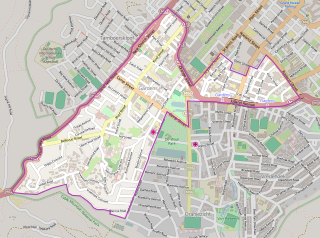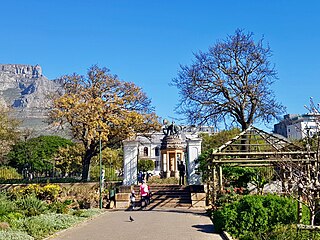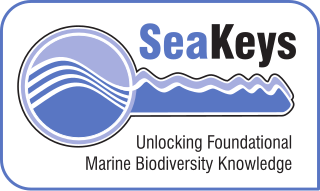
South Africa occupies the southern tip of Africa, its coastline stretching more than 2,850 kilometres from the desert border with Namibia on the Atlantic (western) coast southwards around the tip of Africa and then northeast to the border with Mozambique on the Indian Ocean. The low-lying coastal zone is narrow for much of that distance, soon giving way to a mountainous escarpment that separates the coast from the high inland plateau. In some places, notably the province of KwaZulu-Natal in the east, a greater distance separates the coast from the escarpment. Although much of the country is classified as semi-arid, it has considerable variation in climate as well as topography. The total land area is 1,220,813 km2 (471,359 sq mi). It has the 23rd largest Exclusive Economic Zone of 1,535,538 km2 (592,875 sq mi).

Welkom is the second-largest city in the Free State province of South Africa, located about 140 kilometres (90 mi) northeast of Bloemfontein which is the provincial capital. Welkom is also known as Circle City, City Within A Garden, Mvela and Matjhabeng. The city's Sesotho name, Matjhabeng means 'where nations meet', derived from the migrant labour system, where people of various countries such as Lesotho, Malawi and Mozambique etc. met to work in the mines of the gold fields.

The R27 is a provincial route in South Africa that consists of two disjoint segments. The first segment, also known as the West Coast Highway, connects Cape Town with Velddrif along the West Coast. The second runs from Vredendal via Vanrhynsdorp, Calvinia, Brandvlei and Kenhardt to Keimoes on the N14 near Upington. The connection between Velddrif and Vredendal has never been built, although it can be driven on various gravel roads.

Groot Constantia is the oldest wine estate in South Africa and provincial heritage site in the suburb of Constantia in Cape Town, South Africa.

The Bo-Kaap is an area of Cape Town, South Africa formerly known as the Malay Quarter. It is a former racially segregated area, situated on the slopes of Signal Hill above the city centre and is a historical centre of Cape Malay culture in Cape Town. The Nurul Islam Mosque, established in 1844, is located in the area.

Darling is a small town in a farming area on the west coast region of the Western Cape, about 75 km (46.6 mi) from Cape Town.

The slender bamboo shark, Chiloscyllium indicum, is a bamboo shark in the family Hemiscylliidae found in the Indo-West Pacific Oceans between latitudes 40° N and 10° S, and longitude 65° E and 160° E. It is harmless to humans.

The Iziko South African National Gallery is the national art gallery of South Africa located in Cape Town. It became part of the Iziko collection of museums – as managed by the Department of Arts and Culture – in 2001. It then became an agency of the Department of Arts and Culture. Its collection consists largely of Dutch, French and British works from the 17th to the 19th century. This includes lithographs, etchings and some early 20th-century British paintings. Contemporary art work displayed in the gallery is selected from many of South Africa's communities and the gallery houses an authoritative collection of sculpture and beadwork.

The McGregor Museum in Kimberley, South Africa, originally known as the Alexander McGregor Memorial Museum, is a multidisciplinary museum which serves Kimberley and the Northern Cape, established in 1907.

The Iziko South African Museum is a South African national museum located in Cape Town. The museum was founded in 1825, the first in the country. It has been on its present site in the Company's Garden since 1897. The museum houses important African zoology, palaeontology and archaeology collections.

Gardens is an inner-city suburb of Cape Town located just to the south of the city centre located in the higher elevations of the "City Bowl" and directly beneath Table Mountain and Lion's Head. It is an affluent neighbourhood populated mostly by young professionals and contains numerous chic restaurants, hotels, boutique shops and loft apartments. The suburb is also a hub for the Cape Town creative industry, home to e.tv at Longkloof Studios and many modelling agencies, production and publishing companies and associated industries.

The West Coast Fossil Park is a fossil park near Langebaanweg, Western Cape, South Africa, approximately 150 kilometres (93 mi) north of Cape Town. The fossil sites of Langebaanweg have exceptionally well-preserved remains of fossil fauna that date to circa 5.2 million years ago. In this period sea levels were higher and many now extinct animals lived in the riverine forests, wooded savanna and along the sea coast near the present day Langebaanweg site. Phosphate mining operations at Langebaanweg uncovered these rich fossil deposits. The fossils include bones of over 200 different animal species. This represents possibly the greatest diversity of five-million-year-old fossils found anywhere in the world. The fossil park was formed after mining operations ceased in 1993. The park is partnered with the Iziko South African Museum.

Hopefield is a settlement in West Coast District Municipality in the Western Cape province of South Africa on the R45 between Malmesbury and Vredenburg. The town is east of Saldanha Bay and Langebaan, 40 km (25 mi) southeast of Vredenburg and 120 km (75 mi) north of Cape Town.

The Company's Garden is the oldest garden in South Africa, a park and heritage site located in central Cape Town. The garden was originally created in the 1650s by the region's first European settlers and provided fertile ground to grow fresh produce to replenish ships rounding the Cape. It is watered from the Molteno Dam, which uses water from the springs on the lower slopes of Table Mountain.

The Cecil John Rhodes Statue is a monument erected at Company's Garden in Cape Town. The statue was erected in 1908. It features a full body replica of Cecil Rhodes wearing a three-piece suit, standing with his left hand raised and pointing north. It has been compared to the Jan van Riebeeck statue, which faces south and asserts a different sense of occupation. Despite its size, the present location of the monument in the Company's Garden makes it less significant in comparison to that of Jan Smuts at Adderley Street, Cape Town, a location that had been considered for the placement of the Rhodes statue.
The Iziko Museums of Cape Town — an amalgamation of 12 national museums located near the Cape Town city centre. Iziko museums spheres – natural history, social history and arts.

The São José Paquete Africa was a slave ship from the Kingdom of Portugal that sank in 1794 off the coast of Cape Town, South Africa. Close to shore, but in deep water, 212 of the 400 to 500 African slaves who were aboard died when the ship sank. In 2015, the Smithsonian's African American History Museum, South Africa's Iziko Museums, the Slave Wrecks Project, and other partners, confirmed discovery of the wreck near where it sank. The ship and its slaves were headed from Portuguese Mozambique to Colonial Brazil, during the height of the international African slave trade. Few other former slave ships have been found, but the São José is the first and only shipwreck discovered, as of June 3, 2015, of a working slave ship, which sank in transit with its human cargo aboard.
Homiphoca is an extinct genus of earless seals from the Pliocene of South Africa.

SeaKeys is a large collaborative marine biodiversity project funded through the Foundational Biodiversity Information Program in South Africa. The purpose of the project is to collect and distribute genetic, species and ecosystem information relating to marine biodiversity in southern Africa, which may be used to support informed decision-making about the marine environment.
Antidorcas australis, also known as the southern springbok, is an extinct species of antelope from the Pleistocene and Holocene of South Africa. It is a close relative of the living springbok.



















